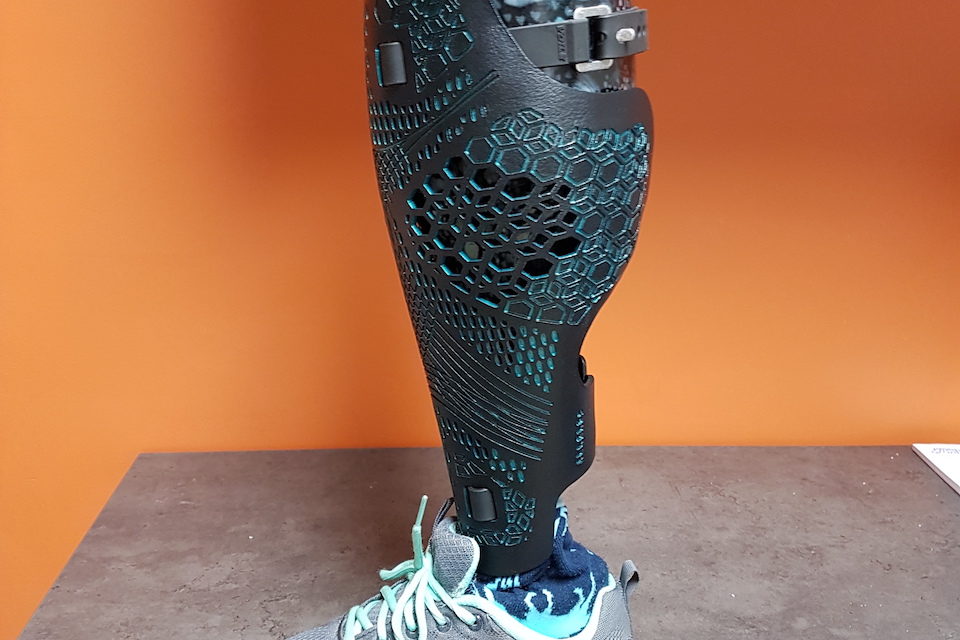Helping amputees design devices that reflect their unique needs and personalities is something we feel particularly passionate about at PBO Group. If you follow our PBO Group Facebook page, you’ve probably seen some of the creative prosthesis coverings that have been designed and manufactured by the talented team that work in our PBO Group production facility.
As you start to envision your next device, getting to know your different choices for coverings is a great first step to help narrow down your options.
Cover-free
Today, an increasing number of amputees are opting to leave their prosthesis uncovered. This is especially popular amongst athletes, as it allows the components to function without any interference and reduces the weight of the prosthesis.
Fairings
Fairings are named after the panels that provide the sculptural design on a motorcycle. Prosthetic fairings create a stronger sense of symmetry with the remaining limb and offer endless options for customization. Fairings are created using 3D scanning and printing technology, which is one of the reasons they are such a great option for those who want to customize their device. These removable covers weigh between one and one-and-a-half pounds.
Foam Covers and Skins
Foam covers are a popular choice and can be custom shaped to reflect the measurements of the client’s existing limb. These covers are flexible and lightweight. Special finishes can be applied to make them waterproof and they can also be custom coloured to better match skin tone. Skins made from a variety of materials, including silicone, latex and polyvinyl chloride (PVC) can also be applied on top of foam covers for additional protection and cosmetic appeal.
Silicone is the most advanced of the material options for cosmetic skins. It is stain resistant, flexible, easy to clean and can last up to five years. Colour can be blended right into the cover and details like freckles, veins and tattoos can be painted on.
Latex covers are a less expensive option, but some drawbacks include the fact that latex tends to tear easily and clothing die can sometimes transfer onto the latex skin. While PVC skins don’t tear as easily, they tend to stain easily and need replacement more frequently. They also are impacted more by changes in temperature, with cold temperatures making them more stiff and warm temperatures making them more prone to peeling.
PBO Group’s Certified Prosthetists will work closely with your team of medical professionals to evaluate your unique needs and choose a covering for your device that suits your lifestyle best. Connect with your PBO Group team to discuss your options. You can easily schedule an appointment using our online form here.






